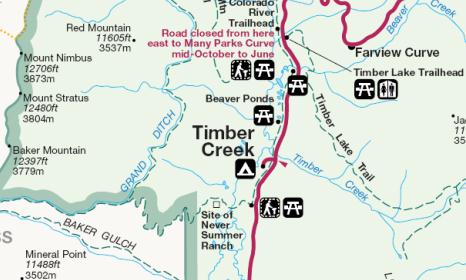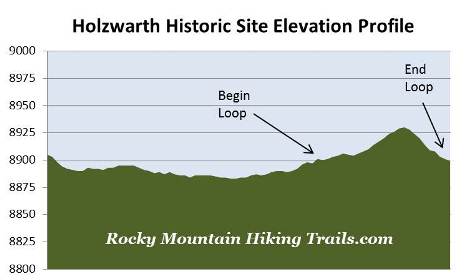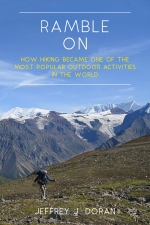Holzwarth Historic Site
| Trail Features: | Historic Stuctures, Scenic Views | 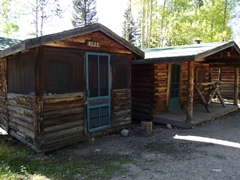 |
|||
| Trail Location: | Holzwarth Historic Site | ||||
| Roundtrip Length: | 1.3 Miles | ||||
| Trailhead Elevation: | 8905 Feet | ||||
| Total Elevation Gain: | 70 Feet | ||||
| Avg. Elev Gain / Mile: | 108 Feet | ||||
| Highest Elevation: | 8930 Feet | ||||
| Trail Difficulty Rating: | 1.44 (easy) | ||||
| Parking Lot Latitude | 40.37257 | ||||
| Parking Lot Longitude | -105.85447 | ||||
Trail Description:
The trailhead for the Holzwarth Historic Site is located 7.4 miles north of the Grand Lake Entrance on the west side of Rocky Mountain National Park.
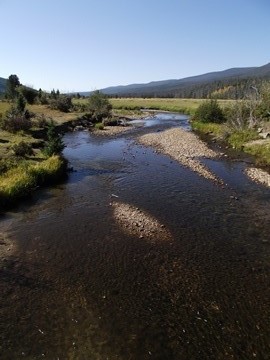 The Holzwarth Historic Site is sometimes referred to as the Never Summer Ranch. Technically, however, there were two distinct businesses in this area.
The Holzwarth Historic Site is sometimes referred to as the Never Summer Ranch. Technically, however, there were two distinct businesses in this area.
John Holzwarth Sr., a German immigrant, moved to the Kawuneeche Valley in 1917 after his job as a saloon-keeper in Denver came to an abrupt end, a result of the enactment of prohibition in Colorado. Holzwarth took his family to the upper Colorado River at the foot of the Never Summer Mountains to build a homestead and start a cattle ranch. His location on the west side of the Colorado River (then known as the Grand River), and next to the newest national park, soon began attracting guests. The family decided to open a guest ranch, which they called the Holzwarth Trout Lodge.
As tourism in the Rocky Mountains increased over the next decade, the Holzwarth family began development of a dude ranch on the east side of the Colorado River, which became known as the Never Summer Ranch. Many historians believe this to be the first dude ranch in Colorado.
The name of the ranch was taken from the nearby Never Summer Mountains. The Arapaho Indians called the range Ni-chebe-chii, which translates into "Never No Summer". Wishing to avoid the use of a double negative, the U.S. Department of the Interior's Board on Geographic Names settled on Never Summer Mountains. Prior to its official naming, the mountains were known as the Rabbit Ear Range.
 Just beyond the parking lot is an old miner's cabin, which was not part of the Never Summer Ranch. The cabin was built by Joseph Fleshuts in 1902. For some unknown reason he abandoned the 160-acre homestead in 1911, and was never heard from again.
Just beyond the parking lot is an old miner's cabin, which was not part of the Never Summer Ranch. The cabin was built by Joseph Fleshuts in 1902. For some unknown reason he abandoned the 160-acre homestead in 1911, and was never heard from again.
From here this mostly level trail continues down to the Colorado River, and offers sweeping views of the Kawuneeche Valley. The valley offers prime habitat for moose, especially near the river and surrounding wetlands where sightings are fairly common. In the Arapaho Indian language Kawuneeche means "valley of the coyote".
As you cross the Colorado River you'll only be 10 miles from its headwaters in the Never Summer Mountains and along the western slopes of the Continental Divide. From here this mighty river travels another 1400 miles to the Gulf of California.
At just over a half-mile from the trailhead you'll reach the Holzwarth Historic Site. From this junction is a short loop trail that meanders through the property.
The first cabin built on the ranch was the Mama Cabin, where Sophia, John's wife, would prepare home-cooked meals for guests (see photos below). Subsequent buildings and cabins at the lodge were built between 1919 and 1945, with the Rose Cabin being the last.
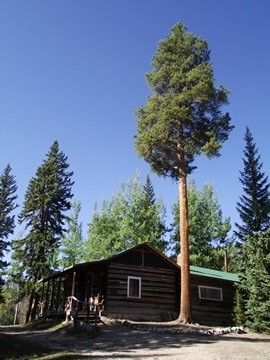
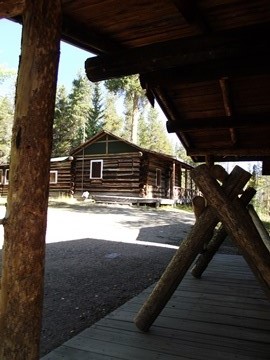
The location of the Ranch near the Never Summer Mountains allowed guests to take guided and un-guided horseback excursions into the mountains. In its heyday the ranch offered horseback riding, hunting and trout fishing for $2 a day, or $11 a week.
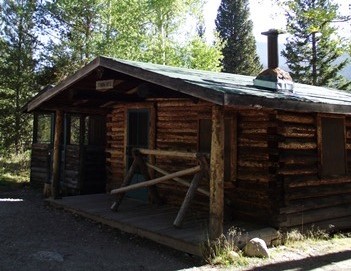 At the age of 71, wishing to preserve the aesthetic value of his property for future generations, John Holzwarth Jr. sold the ranch to the Nature Conservancy in 1974. Holzwarth stated that he could "live with and die knowing that this valley will be for all and not a select few." Upon further reflection he added that "It was a wonderful experience having the ranch; I am a part of it."
At the age of 71, wishing to preserve the aesthetic value of his property for future generations, John Holzwarth Jr. sold the ranch to the Nature Conservancy in 1974. Holzwarth stated that he could "live with and die knowing that this valley will be for all and not a select few." Upon further reflection he added that "It was a wonderful experience having the ranch; I am a part of it."
In the following year the Nature Conservancy transferred the property to Rocky Mountain National Park.
The Never Summer Ranch buildings near Trail Ridge Road were subsequently removed in order to return the site to its natural state. The buildings at the Holzwarth Trout Lodge complex, however, were retained as a representation of early dude ranching in the Rockies.
Although the site is open year-round, there's no access to the interior of the buildings in the winter. The buildings are usually open for tours from about mid-June through Labor Day.
